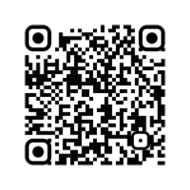Hunters play a huge role in the wildlife conservation world. Other than providing funding through license sales and purchase of all types of gear they are often the eyes in the field for wildlife agencies. Successful wildlife conservation is dependent in part on an understanding of animal movement and longevity. One of the best ways for scientists to get this data is through marking individual animals. Animals of all sizes can be captured, marked and released, then hunters need to report them. In general, it is best to be connected to wildlife agencies in your area to keep updated on what types of marked animals you might encounter and what to do if you do encounter them.
Waterfowl
Waterfowl are often banded prior to the hunting season. Most commonly, uniquely numbered metal bands are fastened around the leg of a duck or goose. The number on the band is associated with species, sex, and age data recorded when the bird is captured. A hunter often does not know a bird is banded until it is in hand. When a banded bird is harvested it is the hunter’s responsibility to report this specific harvest. When the bird is reported biologist get information about how long the bird survived and can estimate migration corridors. This data is compiled with thousands of other entries that feed into population models. Nearly all migratory bird bands are reported through the USGS Bird Banding Laboratory.
Turkey
Wild Turkey can also be marked using leg bands. Similar to waterfowl, these birds are captured and marked with small metal leg bands associated with sex and age class. The specific study dictates which type of bird is banded. Maybe it is adult gobblers or immature hens so it is important to report any turkey band. In most cases, these bands are reportable to state wildlife agencies and help estimate harvest levels.
Big Game
Big game animals can be marked to answer specific questions about population dynamics. These large animals are commonly marked with ear tags or neck collars visible to the hunter prior to harvest. In most cases, biologists prefer that the marking of the animal does not factor into the hunter’s decision to take the individual. Instead, hunters should consider if the animal fits within their harvest goals based on sex, size, and age class. There is not a central reporting system for big game animals, the ear tag or neck collar itself will have specific information on reporting. Again, each animal is linked to biological data collected when the individual was captured. The date and location of kill help biologists understand the life history between capture and harvest of the individual.

Hunters who harvest a marked animal can in most cases keep the band/collar or request a replica. This becomes a secondary trophy for a hunter to remember harvesting a unique animal. Hunters should be proud that they have done their part after reporting a marked animal.














9792 Comments
Leave Comment
Cancel Reply